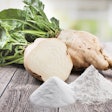["What becomes popular in the human food and supplements aisle often becomes the next new thing in petfood.", "It seems likely that if coconut oil were to become an addition to a petfood formula, it would be supplemental at best."]
Coconut oil has become fashionable with a near cult-like following in the human dietary health and supplements aisle. Although it was once cast aside as an ingredient that contributed to cardiovascular health issues, now it is being touted as a cure for everything from obesity to acne. And of course what becomes popular in the human food and supplements aisle often becomes the next new thing in petfood. Interestingly, we have had discussions about using coconut oil in petfood in the past and it didn't quite meet the needs at that point in time. So, is its emergence now accompanied by any new diet and nutritional discoveries that merit a fresh look at this ingredient?
Coconut palm (Cocos nucifera, L.) trees grow in tropical regions +/- 20° from the equator and produce fruit, the coconut, throughout the year. The Philippines and Indonesia are the leading producers of coconut oil. The fruit is the same thing that you would buy in the grocery to make into a coconut cream pie or other coconut-flavored dessert. It consists of the husk (mesocarp), shell (endocarp), testa (paring; separates the kernel from the inner surface of the shell), the kernel or meat (endosperm), and within this a cavity that contains a milky liquid or coconut water. The kernel is the material that is harvested and pressed for coconut oil.
The process of extracting the oil from the kernel follows either a dry or wet method. The "dry" process is the more traditional. In this approach, the coconut is split and allowed to dry in the open air. As it dries, the kernel shrinks from the shell. The dried kernel called "copra" is concentrated to a point that it contains about 2/3 oil. This copra is ground, flaked and cooked before being conveyed through an expeller and the oil is separated. Hexane, a solvent, may be incorporated to improve the efficiency of oil extraction from the copra. The by-product copra meal is prepared for livestock feed.
In the more modern "wet" process, fresh kernels are pared (husk, shell and testa removed) and ground then pressed in a screw press to expel the "coconut milk." This coconut milk is centrifuged and the cream (oil) is separated. The expelled or pressed oil from both processes may undergo further refining, bleaching and deodorizing before being presented for sale. If not deodorized, the oil is considered lower grade and called cochin oil.
Coconut oil is considered a "lauric acid oil" due to its high proportion of lauric acid (C12:0), a 12-carbon saturated oil. The amount of lauric acid approaches 50% of the total fatty acids. Coconut oil is also the richest source of "medium-chain triglycerides" (MCT). These MCT oils are comprised of fatty acids containing 12 or less carbons. Coconut oil is over 60% medium-chain fatty acids [Caproic (C6:0; 0.5%), Caprylic (C8:0; 7.8%), Capric (C10:0; 6.7%) and Lauric (C12:0; 47.5%)]. Coconut oil also contains an appreciable amount of Myristic (C14:0; 18.1%) and Palmitic (C16:0; 8.8%) fatty acids. Virtually all of the oil is saturated.
Coconut oil has an iodine value of 7-12 (measure of unsaturation) and a melting point of 24-26°C; compared to soybean oil with an iodine value of 120-143 and a melting point of -9 to -11°C. In other words, coconut oil behaves differently than many other vegetable oils because it is a semi-solid to near solid at room temperature and in food applications behaves more like butter or lard.
Further, because of its saturation, coconut oil is quite stable under storage. However, if improperly handled or contaminated with hydrolytic bacteria it will develop a soapy off-odor. Because of its unique fatty acid composition, coconut oil has several industrial applications. For example, coconut oil soap stock is popular for bar soap and one of the by-products from refining, glycerol, is used for various confection and pharmaceutical applications.
As noted above, coconut oil falls into the category of medium-chain triglyceride oils. The commercial MCT oils have found favor in parenteral solutions, enteral diets and in milk replacer formulas. They might have application in high performance foods as well. However, commercial medium-chain triglycerides emphasize the C8:0 and C10:0 fatty acids, not the coconut oil's predominant C12:0 lauric acid.
While coconut oil can provide some of these fatty acids, it is only through a process of hydrolysis and re-esterification with glycerol that forms the randomized medium-chain triglycerides desired in an MCT oil composition. There are numerous studies in dogs demonstrating the benefit of these semi-synthetic MCT oils; but this work does not really address the renewed notion of feeding coconut oil alone to dogs and cats.
Unfortunately, direct documentation of feeding results from coconut oil in dogs and cats is very scarce and relatively dated. However, a few studies in which coconut oil was fed to dogs do exist. The work of Grande and Prigge (1974) fed from 4.5% to 21.6% of the diet as coconut oil in exchange for sucrose or protein. Coconut oil was known for being readily accepted by dogs and the authors made no note of any intake or digestive issue at the higher levels. So, one could surmise in the absence of reports to the contrary, that these higher levels were not an issue in their study.
The subject of their paper, serum cholesterol, was shown to be elevated with dietary coconut oil regardless of whether it replaced sugar or protein. This is a common effect in human subjects and one of the reasons for declining popularity of these oils in the decades leading up to this current resurgence. However, serum cholesterol levels are not necessarily an issue for otherwise healthy dogs or cats. Further, the work of Altom et al. (2003) would suggest that coconut oil is counterproductive to a dog's sensory capabilities. In their study, dogs fed more saturated fat diets from beef tallow and coconut oil (8% of the diet) had muted olfactory responses.
So it appears, albeit indirectly, that coconut oil is accepted by dogs without negative digestive or acceptability issues at levels consistent with the amounts of fat that are commonly added to dry extruded diets. Based on this, one could conclude that coconut oil might satisfy a total replacement for other forms of fat in the diet; that is if it does not detract from other nutritional considerations. It must be noted that coconut oil does not supply sufficient levels of the essential fatty acids (e.g., linoleic acid) and it most certainly does not supply any omega-3s, if one wants to fortify the diet accordingly. This would severely limit its usage rate from the outset.
Further, we lack any significant information on how it processes or handles in conventional oil and fat handling systems or how it behaves through the petfood manufacturing process. Plus, there isn't any readily available information on how cats might adapt to this oil. So, for any company considering its use, caution should be the first consideration.
It seems likely that if coconut oil were to become an addition to a petfood formula, it would be supplemental at best. This is actually the route in which many human health advocates and vegan chefs are recommending it now. Also, cost will likely be a significant factor. So in the end, there doesn't seem to be any new information for dog and cat nutrition and until we have more viable data, application rates should probably not exceed 1% to 2%. Further, any use should be validated in cat and/or dog diets to assure they actually handle this ingredient without issue.



















